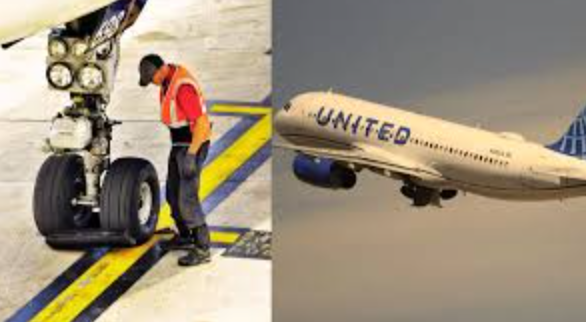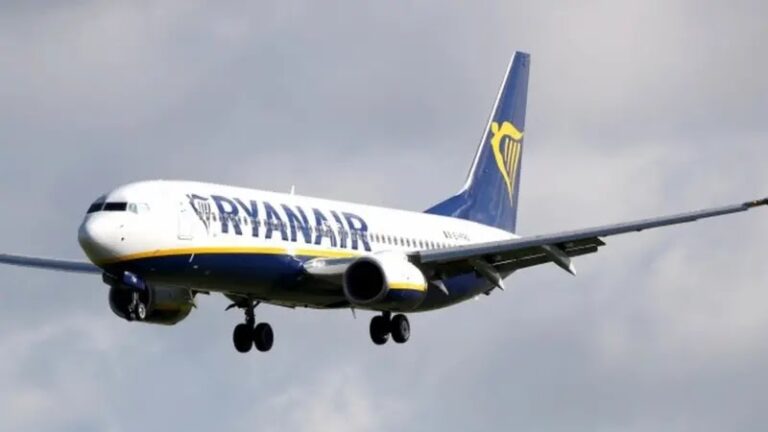Dead body found in wheel well of United Airlines plane after it lands in Hawaii
A tragic and deeply disturbing discovery was made upon the landing of a United Airlines flight in Hawaii this week. Authorities confirmed that a dead body was found in the wheel well of a Boeing 777 aircraft that had arrived at Daniel K. Inouye International Airport in Honolulu. The body, believed to be that of a male stowaway, was discovered during a routine post-flight inspection, sparking an immediate investigation by federal and local authorities.
This incident has raised numerous questions about airport security, the circumstances of the individual’s death, and the broader issue of illegal stowaways attempting to travel in one of the most dangerous and desperate ways imaginable.
Shocking Discovery After Routine Flight
The flight in question, United Airlines Flight 201, departed from Los Angeles International Airport (LAX) and landed in Honolulu after a roughly five-and-a-half-hour journey across the Pacific Ocean. The flight carried hundreds of passengers and crew on what was considered a routine and uneventful trip. However, the grim discovery made upon arrival transformed the routine flight into a federal investigation.
Ground crew conducting standard maintenance and safety checks after the aircraft landed discovered the body lodged in the wheel well of the plane — a cramped, non-pressurized, and unheated compartment designed to house the landing gear. Authorities were immediately notified, and the area was cordoned off for further examination by law enforcement and aviation safety personnel.
Victim’s Identity and Cause of Death
As of the latest reports, the identity of the deceased has not yet been officially confirmed, though authorities believe the person to be a male in his late teens or early twenties, possibly of foreign origin. Investigators from the FBI and the Transportation Security Administration (TSA) are working to identify the individual using fingerprints, DNA, and any personal items found on or near the body.
While the exact cause of death will be determined by a coroner’s report, it is believed the man died either from hypoxia (lack of oxygen) or hypothermia during the flight. Temperatures inside a wheel well at cruising altitude can plunge to as low as -50 degrees Fahrenheit (-45 Celsius), and oxygen levels are critically low. At altitudes exceeding 30,000 feet, it becomes almost impossible for a human to survive without pressurization or supplemental oxygen.
Security Concerns and Possible Points of Entry
One of the most pressing questions raised by this incident is: how did the individual manage to breach airport security and access the aircraft? Given the post-9/11 security measures in place at all major U.S. airports, it is extremely difficult for unauthorized individuals to get near a commercial aircraft, let alone climb into its wheel well.
There is speculation that the man may have accessed the aircraft while it was parked at LAX, potentially slipping through a perimeter fence or evading surveillance. United Airlines and airport officials are reviewing surveillance footage, maintenance records, and security logs in an effort to determine precisely when and how the breach occurred.
This discovery has sparked renewed calls for a re-evaluation of airport perimeter security. In recent years, multiple incidents across the world have shown that while passenger screening has become extremely stringent, ground-level access to airport facilities can sometimes remain a vulnerability.
Not the First Incident
Though rare, this is not the first time a person has attempted to stow away in the wheel well of an aircraft. According to Federal Aviation Administration (FAA) records, over 130 known stowaway attempts have been made globally in the past few decades, and more than 75% of those have resulted in death. The combination of extreme cold, low oxygen, and physical trauma from the aircraft’s mechanical parts makes survival extremely unlikely.
One of the most well-known cases occurred in 2014 when a 15-year-old boy survived a flight from California to Hawaii in the wheel well of a Boeing 767, a feat that shocked aviation experts and prompted calls for enhanced airport security. However, most such attempts end tragically, often with victims falling out of the wheel well during takeoff or landing or dying mid-flight.
The recent case is especially sobering, as it highlights the lengths to which some individuals are willing to go to escape their circumstances — whether due to economic desperation, fear of persecution, or the pursuit of a better life.
United Airlines and Government Response
United Airlines issued a brief statement following the incident, expressing condolences and confirming that it is cooperating fully with authorities. “We are deeply saddened by this tragic incident and are working closely with local and federal authorities in their investigation,” the airline said.
The Federal Bureau of Investigation is leading the probe, in collaboration with the TSA and U.S. Customs and Border Protection. A key focus of the investigation is to determine if the deceased was part of a broader smuggling or trafficking operation, though at present, there is no evidence suggesting organized criminal activity.
The Department of Homeland Security has also been notified, and congressional officials have called for a report on the security lapses that may have allowed such an event to occur. Senator Brian Schatz of Hawaii stated, “This incident underscores the urgent need to review and, if necessary, overhaul airport perimeter security protocols. It should not be possible for someone to climb aboard a commercial aircraft undetected.”
Human Tragedy and Broader Implications
Beyond the security and technical aspects of the case, the story is, above all, a human tragedy. The individual who lost his life was likely driven by desperation, believing that the only path to a new beginning lay in a cramped and deadly compartment beneath a jetliner. His story — still largely unknown — is a grim reminder of the human costs associated with inequality, migration, and conflict.
Advocates for refugee and migrant rights have pointed to this incident as emblematic of broader systemic failures that leave people with few safe options for migration. “No one should have to risk their life in such a horrific manner,” said a spokesperson for Human Rights Watch. “This case highlights the need for humane immigration policies and better international cooperation on asylum and refugee issues.”
What Happens Next?
Authorities are expected to release more information in the coming days, including a possible identification of the deceased, further details about his background, and any findings related to how he accessed the aircraft. The National Transportation Safety Board (NTSB) may also conduct a review, although this incident falls primarily under criminal and security jurisdiction.
In the meantime, United Airlines and other carriers are likely to implement additional security measures, at least temporarily, to prevent similar occurrences. Airport authorities at LAX and other major hubs may also conduct internal reviews and expand surveillance efforts around aircraft during ground operations.
Conclusion
The discovery of a dead body in the wheel well of a United Airlines plane landing in Hawaii is a grim and unsettling reminder of the challenges facing both aviation security and global migration policy. As investigators work to determine how such a breach could have happened, the public is left to grapple with the human dimensions of the tragedy — a life lost in a desperate and ultimately fatal attempt to fly undetected.
While rare, such incidents serve as wake-up calls for governments, airlines, and society at large. They demand not only stronger security systems but also a deeper reflection on the forces that drive people to such harrowing extremes.






